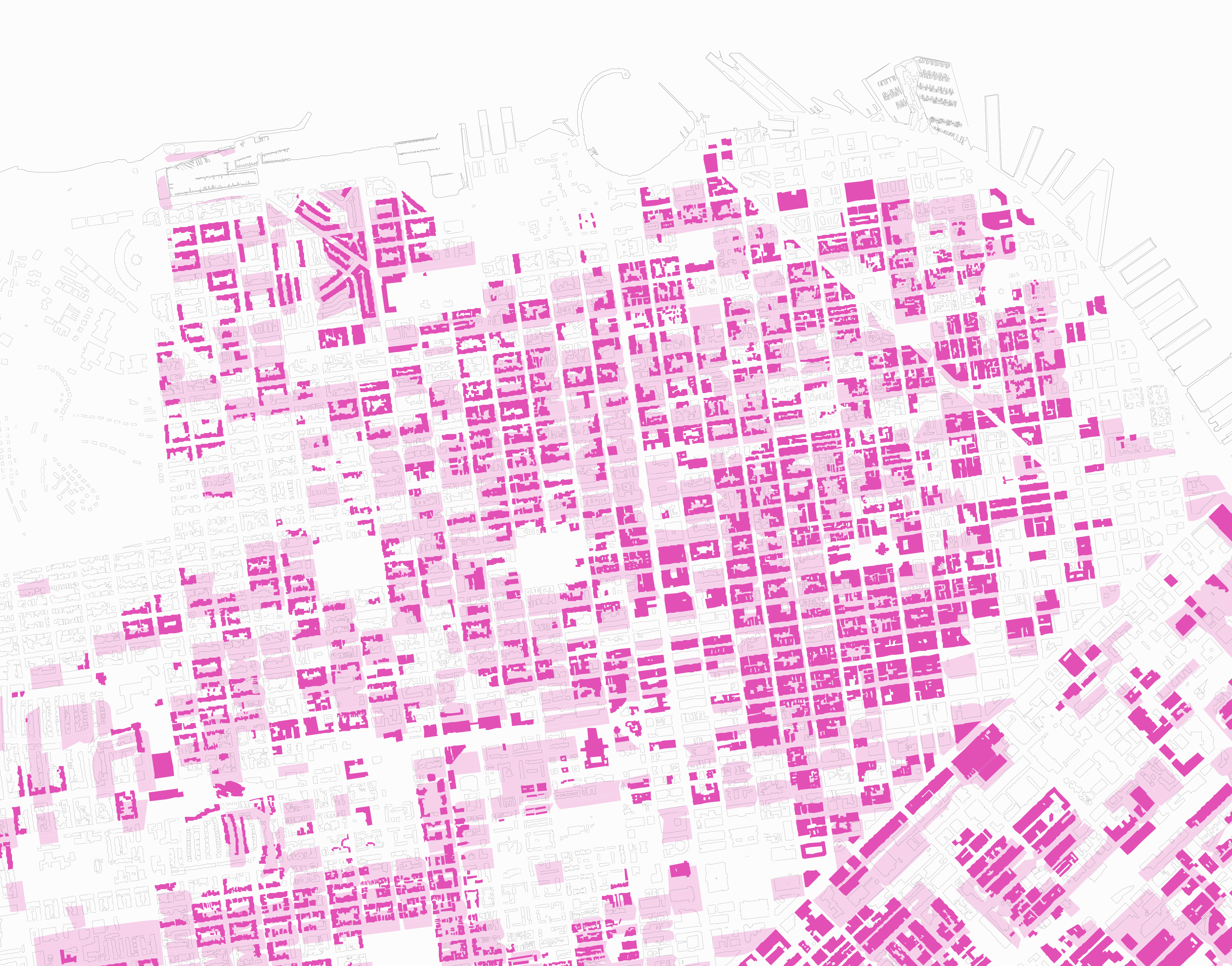plastic city
Plastic City proposes a new developers' model for short-term rentals. This project addresses the way we understand private-public relations, property, ownership, social exchanges, and spatial assets. It is designed as a new addition that sits above the existing residential fabric of San Francisco where party walls are undermined, circulation is maximized, and amenities are hyper-valued.
California College of the Arts
research, architecture, urbanism, policy, planning


SHORT-TERM RENTALS ARE AN INFRASTRUCTURAL NETWORK
Hidden within San Francisco are soft, flickering networks of urban transformation.
Companies such as Airbnb and VRBO are changing the physical landscape, challenging the boundaries
of privacy and how we understand home ownership.

ADDITIVE DEVELOPMENT
The project begins loosely based on San Francisco's Affordable Housing Bonus Program, proposing a developers' model to to add short-term units above the city's existing urban fabric to accommodate short-term visitors while protecting existing housing stock for long-term residents.

 DOMESTIC COMPROMISES
DOMESTIC COMPROMISES
Residential units are intertwined with shared spaces, making them only accessible by walking through a private space.